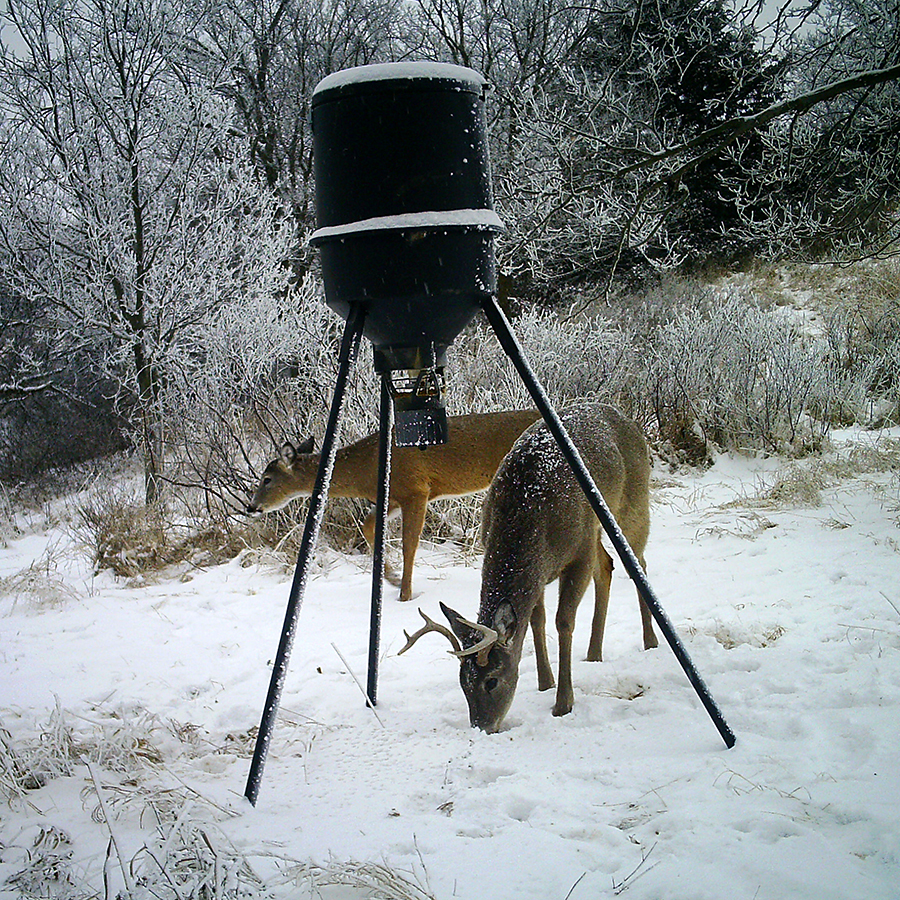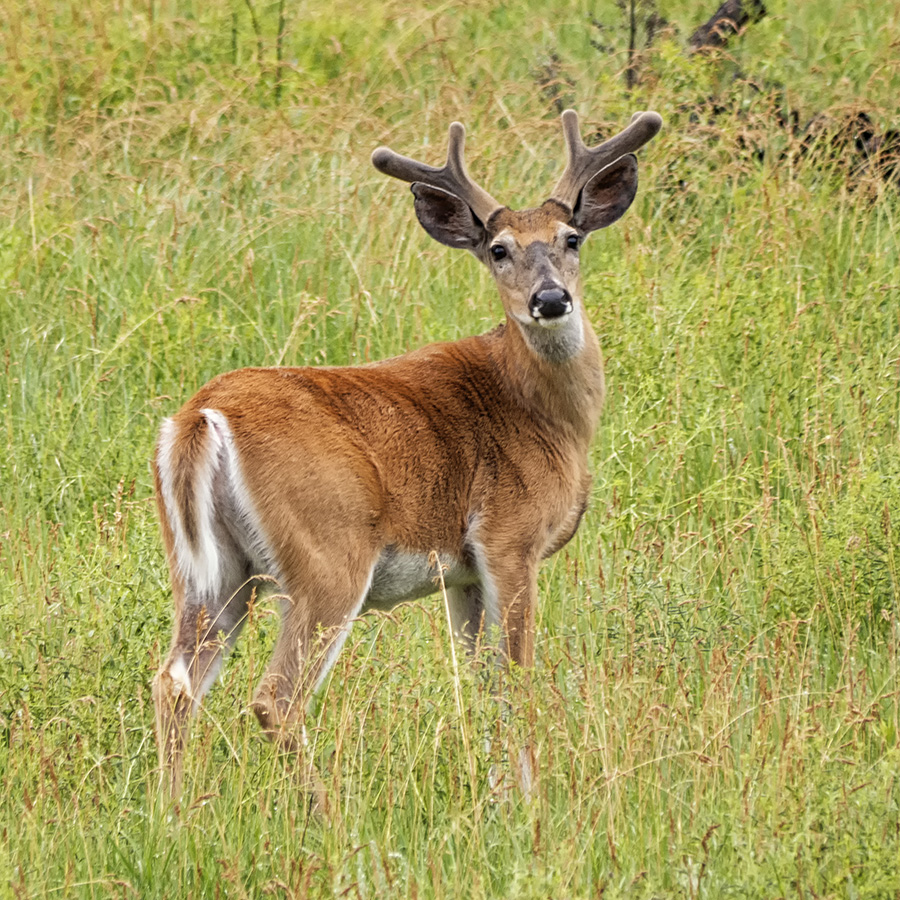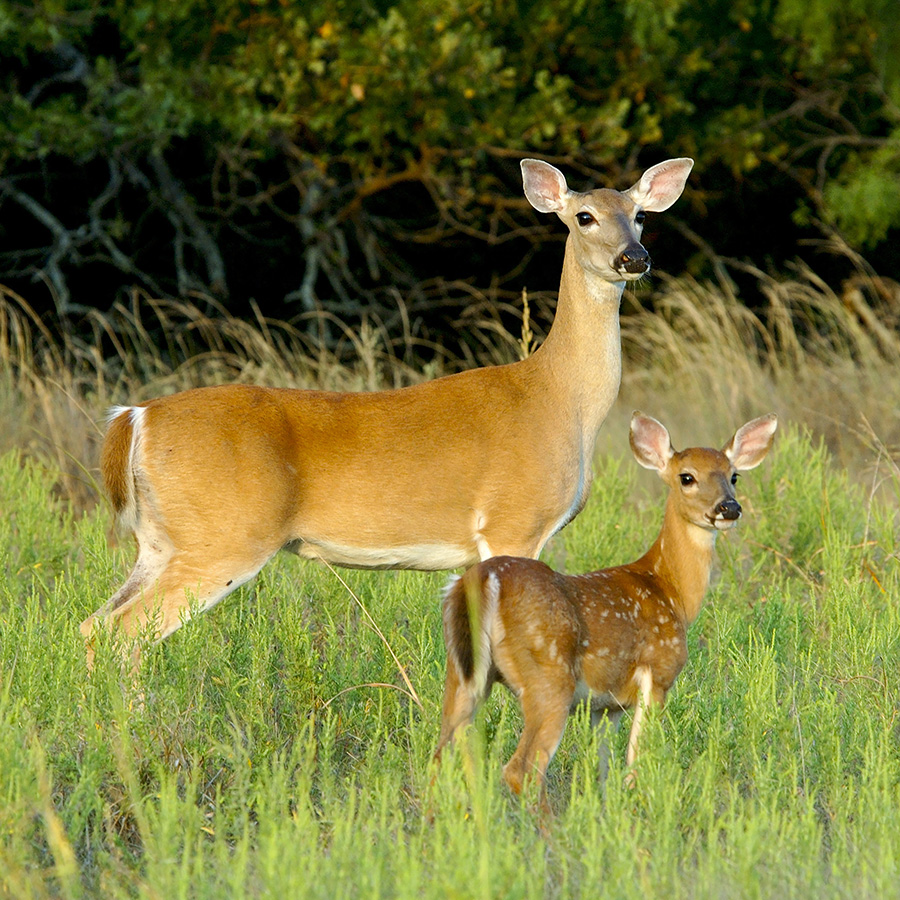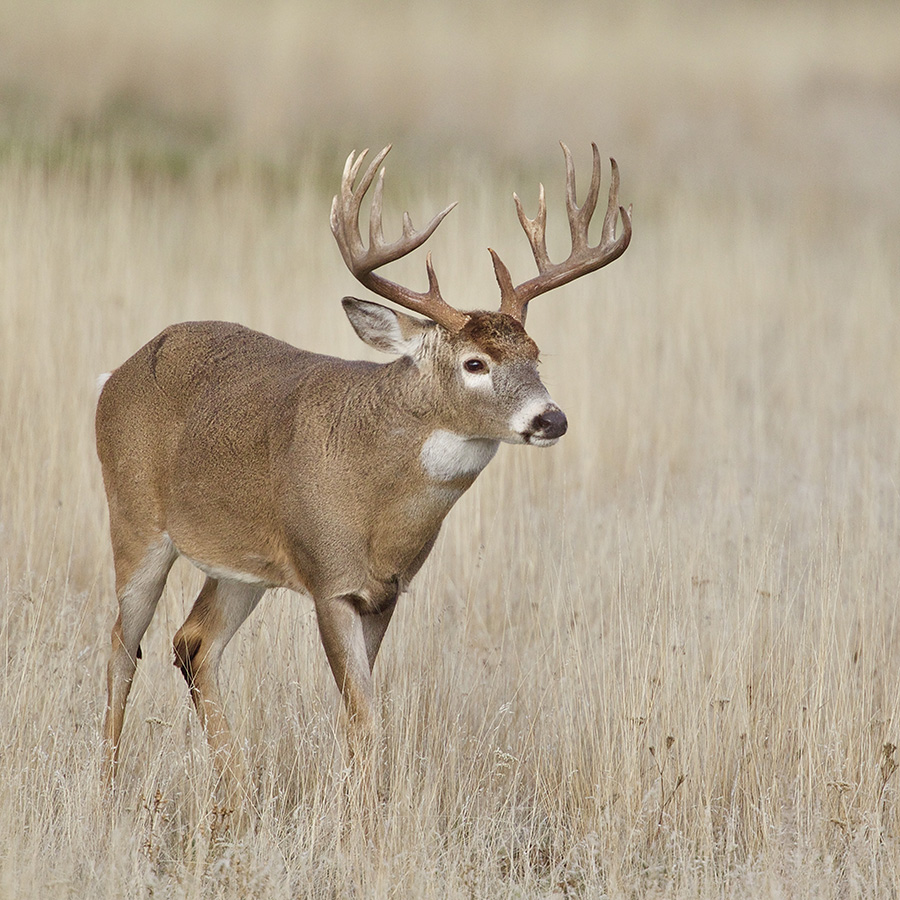SUCCESSFUL DEER NUTRITION IS A YEAR-ROUND JOB

When managing a deer population, two major factors impact the growth and reproduction of your herd – habitat and nutrition. Implementing a supplementation program that fills any gaps in your habitat is an essential management practice.
Age, nutrition, and genetics are the primary ingredients in the recipe for growing big bucks. Providing the maximum level of nutrition and paying attention to quality, quantity and timing will put you on the path to a successful program. A successful nutrition program will yield healthy deer herds, and healthy deer herds produce quality bucks.
The common practice in many deer operations is to only offer protein supplementation outside of hunting season. But, research shows offering a balanced free choice supplement year-round can offer numerous advantages to your program. Today’s discussion will cover the nutritional needs of your deer herd throughout the year and how to incorporate Rack Revolution products for the biggest impact.

Late Fall to Early Spring
More mature bucks die each year from post rut stress and malnutrition than are taken by hunters. Bucks can lose up to 30% of their body weight as a result of stress and decreased intake during the winter. The anti-inflammatory and antibacterial additives in Rack Revolution Magnify allow bucks to recover faster and have a better chance of survival.
As deer are more nutritionally sensitive when under stress, it is important to supplement with a low starch content to avoid acidosis. Magnify offers all-natural, concentrated protein and energy with very low amounts of residual starch and sugar. Our formula uses essential oils and botanicals to naturally help deer more easily digest the available forage for maximum nutrient utilization, allowing bucks to maintain better body condition during and after the rut. This leaves more nutrients available for antler growth as soon as they drop the old set.
The same concepts apply to your doe population during this time period, as well. Does that are pregnant with fawns immediately following the rut will require additional nutrition to ensure that their fawns are born healthy. Year-round supplementation offers higher protein and energy than native browse alone, so does maintain better body condition and are ready to raise a healthy fawn.

Early Spring to Early Summer
Supplemental feeding is beneficial to the deer herd in spring. Providing a supplement not only offers a boost in protein and energy, but will also provide additional minerals and fats that native browse and most food plot species lack.
Bucks begin shedding their antlers in late winter/early spring. Bucks shedding early is an indication of an unhealthy deer population. Deer that are injured or over-stressed during the rut will often begin shedding their antlers as early as late January. The combination of maximum protein and natural plant extracts in Rack Revolution Magnify encourages bucks to heal faster and hold on to their antlers longer, which will allows a better time frame to begin growing their next set. Bucks will begin growing their new antlers by the end of spring, a function requiring a high protein diet, but also plenty of calcium and phosphorus. As bucks begin to grow their antlers, increased blood flow is necessary for the body to carry nutrients to their velvet. Rack Revolution’s mineral product, Fortify, provides the necessary chelated minerals to increases the potential to grow larger and harder antlers.
Does are near their fawning dates during this period and need to prepare their bodies for nursing, which will deplete their fat stores throughout the summer. Does also have to support a growing fetus in the third trimester, giving it the best chance to survive through the summer. To do this, they are still in need of energy to maintain their body condition and protein to aid the development of the fetus. The proprietary blend of essential oils and natural yeast culture in Magnify improves digestion and maximizes absorption to meet the requirements of both doe and fetus.

Early Summer to Early Fall
Summer is the most important time for proper nutrition. Bucks will put on the highest percentage of new antler growth during June and July. Fortify mineral will promote maximum growth potential and meet requirements for sodium, calcium and phosphorus. Antlers will begin to slow their new growth in early August.
This period is also crucial for your doe population as fawns are born. Lactating does have even higher nutritional demands than bucks growing antlers. A nursing doe uses — and loses — more nutrients and energy than any other class of deer. It is critical for nursing does to pass on proteins and energy through their milk to their growing fawns. By the end of summer, fawns will start to wean but are still in need of a high-protein diet to ensure good muscle development and growth rates going into fall.
Late summer and early fall are when disease carrying midges are most prominent, making the natural insect repellant provided by our essential oil blend in Amplify an added summertime benefit. This allows you to decrease insect infestations and reduce the risk of insect-born diseases without using harsh chemicals.

Late Summer through Rut
As days get shorter this time of year, the decreased photoperiod causes antlers to harden in mid-August and velvet will begin coming off. Bucks begin bulking up for the upcoming breeding season (the rut) and does need to add fat reserves to prepare for pregnancy during the harsh winter months. Fawns are 4-6 months old and begin weaning during this time frame, requiring additional food sources to enable their survival. Overall, every deer in your herd is trying to increase fat stores, and to do that they need energy. The distillers grain base of Magnify pellets offers more protein and energy than other supplements, and the added blend of oils and yeast culture maximize digestion and nutrient absorption.
Fertility is another major factor during the breeding season. Rack Revolution’s natural plant extracts will increase fertility in does, and it will increase the percentage of does that will become pregnant with twin fawns. This is a vital piece of overall herd health, as twin fawns are in indicator of a healthy deer herd.
